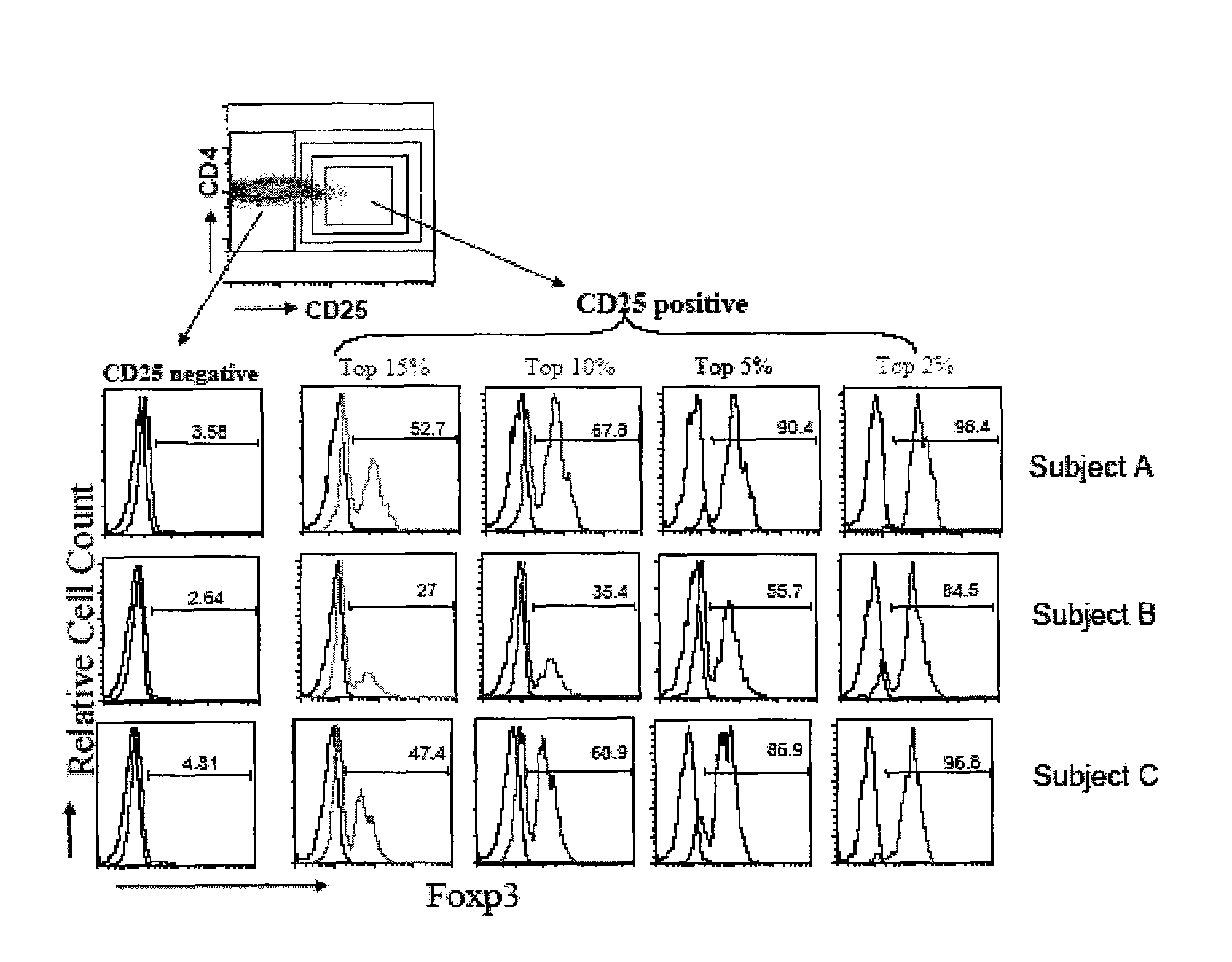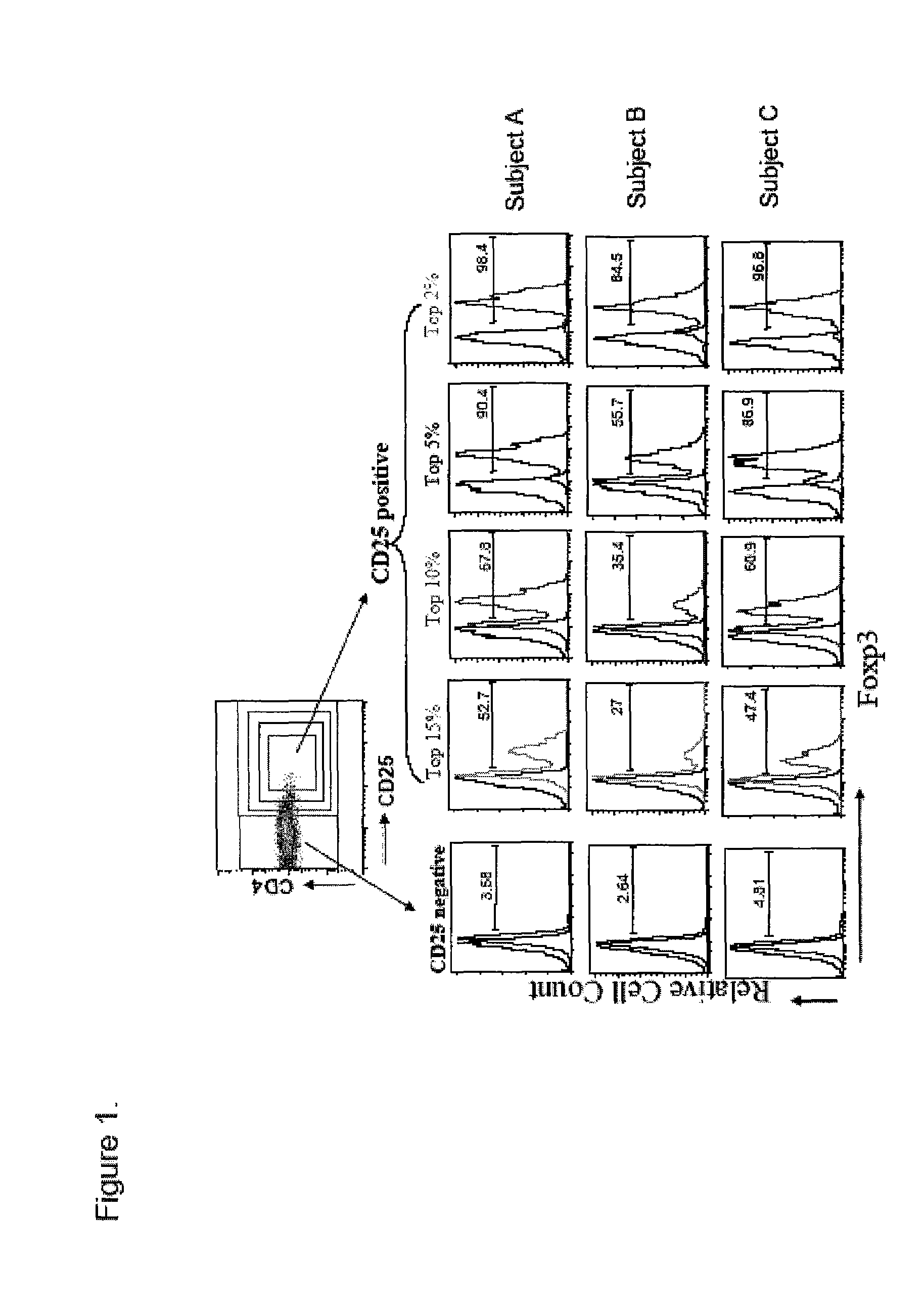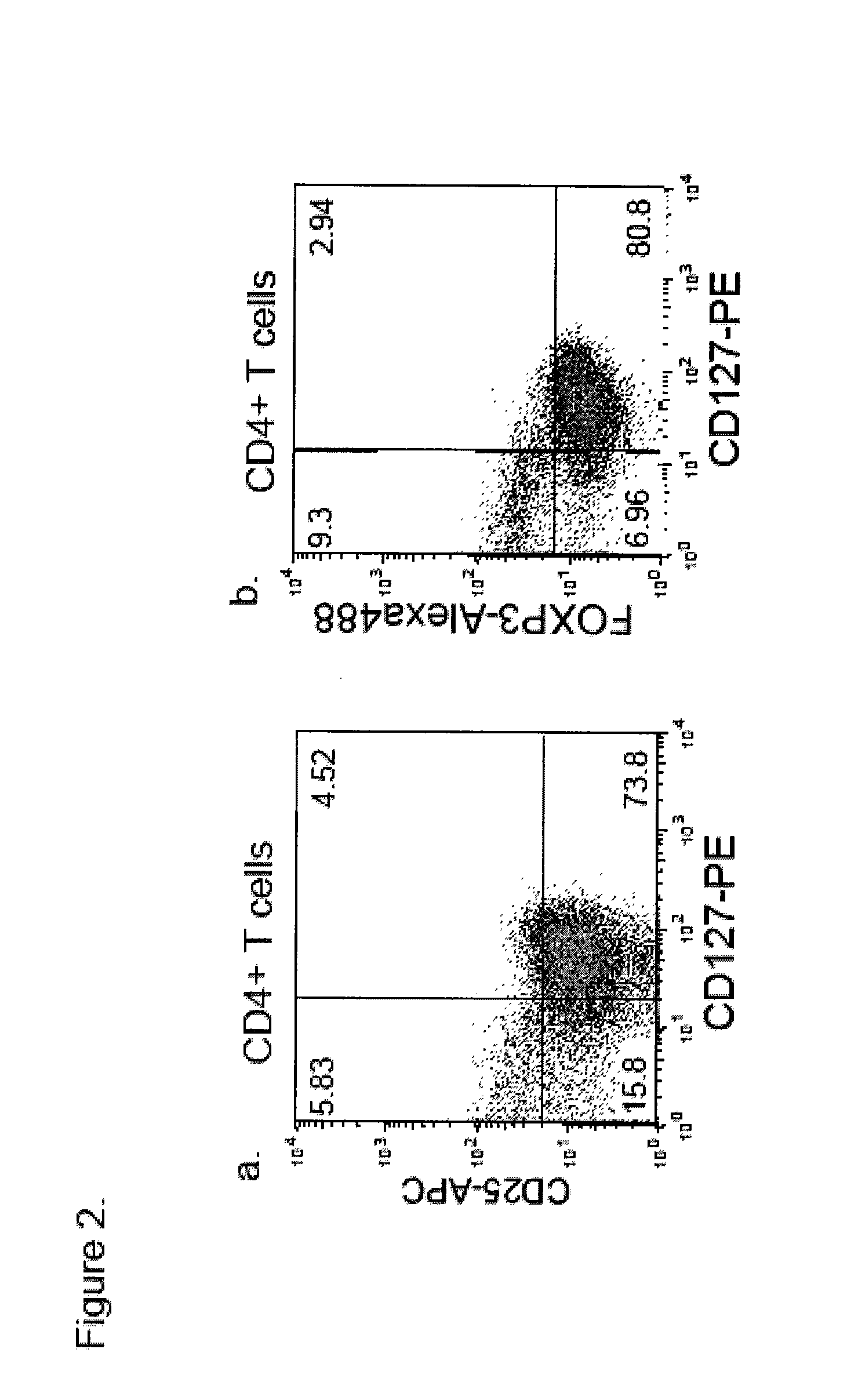Cd127 expression inversely correlates with foxp3 and suppressive function of cd4+ tregs
a cd127 and foxp3 technology, applied in the field of cd127 expression inversely correlates with foxp3 and the suppressive function of cd4+ tregs, can solve the problems of limiting the number of unable to define and separate tregs from other regulatory or effector t cell subsets, and unable to define specific cell surface biomarkers
- Summary
- Abstract
- Description
- Claims
- Application Information
AI Technical Summary
Benefits of technology
Problems solved by technology
Method used
Image
Examples
embodiments
[0071]Accordingly, in a first aspect, the invention provides methods of identifying whether a regulatory T-cell is a suppressive regulatory T-cell by detecting only one cell surface antigen of the T-cell, CD127 in an enriched T cell sample. In some embodiments, the invention provides methods of determining whether a regulatory T-cell is highly likely to be a FoxP3+ suppressive T regulatory cell by detecting only one cell surface antigen of the T-cell, CD127 in an enriched T-cell sample. In preferred embodiments, the CD127lo / − cells are identified by contacting regulatory T-cells in the sample with fluorescently-labeled monoclonal antibodies which specifically bind to CD127+ and identifying cells having a reduced level of fluorescent label attached thereto. The CD127− T-cells in large proportion are immunosuppressive or FoxP3+ cells. In further embodiments, the CD127lo / − T-cells are CD127− T-cells. In further embodiments, the invention provides methods of estimating the number of Fox...
example 1
Antibodies
[0157]Human Antibodies: PE-conjugated anti-CD127, APC-conjugated anti-CD25, PerCP-conjugated anti-CD4 used for staining and in sorting was provided by Becton-Dickenson (BD Pharmingen, San Diego, Calif.). Alexa488-conjugated anti-FoxP3 was purchased from BioLegend (San Diego, Calif.) and intracellular staining was performed according to manufacturer's instructions as modified as follows: 5×105 cells were stained with cell surface markers for 30 min at 4° C. and fixed for 30 min using 1× Fix / Perm buffer. After 3 washes cells were permeabilized in Perm buffer with DNase I (Sigma-Aldrich, St. Louis, Mo.) for 30 min followed by 3 washes. Then cells were blocked with human IgG and stained with anti-human FoxP3-Alexa488 conjugated (BioLegend, San Diego, Calif. clone 206D). The following anti-mouse antibodies were purchased from the indicated sources: anti-CD4, anti-CD25 and mouse IgG1 (isotype control) (BD Pharmingen, San Diego, Calif.); and anti-IL-7R (eBioscience, San Diego, Ca...
example 2
Subjects
[0158]A total of 16 patients with longstanding type 1 diabetes mellitus were studied. Patients (age range 16-56 years, mean age 34, with a disease duration longer than 5 years) were recruited from the Barbara Davis Center for Childhood Diabetes, Denver, Colo., USA. Diagnosis of type 1 diabetes was made primarily by the presence of biochemical autoantibodies or presentation of hyperglycemia with ketosis in childhood. None of the diabetic subjects had severe nephropathy or neuropathy. As controls, 10 subjects (age range 20-50 years, mean age 29) with no family history of diabetes mellitus were also tested. Blood samples were obtained with informed consent under Institutional Review Board approved protocols at either the University of Colorado Health Sciences Center or UCSF as needed.
PUM
| Property | Measurement | Unit |
|---|---|---|
| molecular weight | aaaaa | aaaaa |
| molecular weight | aaaaa | aaaaa |
| molecular weight | aaaaa | aaaaa |
Abstract
Description
Claims
Application Information
 Login to View More
Login to View More - R&D
- Intellectual Property
- Life Sciences
- Materials
- Tech Scout
- Unparalleled Data Quality
- Higher Quality Content
- 60% Fewer Hallucinations
Browse by: Latest US Patents, China's latest patents, Technical Efficacy Thesaurus, Application Domain, Technology Topic, Popular Technical Reports.
© 2025 PatSnap. All rights reserved.Legal|Privacy policy|Modern Slavery Act Transparency Statement|Sitemap|About US| Contact US: help@patsnap.com



